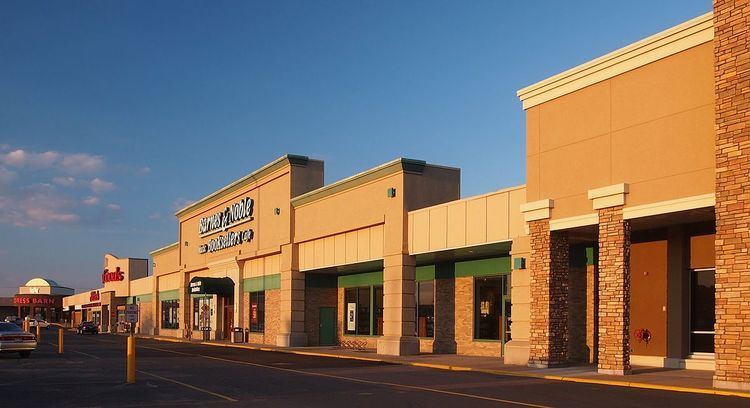Opening date August 1963 Owner Vanbarton Group LLC No. of stores and services 45 Phone +1 651-631-0340 Number of anchor tenants 5 | Management Vanbarton Services LLC Architect Robert W. Fendler Opened August 1963 Number of stores and services 45 | |
 | ||
Address 2100 Snelling Ave N, Roseville, MN 55113, USA Hours Open today · 10AM–9PMThursday10AM–9PMFriday10AM–9PMSaturday10AM–6PMSunday12–5PMMonday10AM–9PMTuesday10AM–9PMWednesday10AM–9PM Similar Rosedale Center, Shoppes at Knollwood, Northtown Mall, Eden Prairie Center, Maplewood Mall | ||
Driving in saint paul mn frogtown to har mar mall
Har Mar Mall is an enclosed shopping mall in Roseville, Minnesota, a suburb of the Twin Cities. Har Mar Mall comprises over 430,000 square feet (40,000 m2) of retail space and is anchored by Burlington Coat Factory, Cub Foods, HomeGoods, and Marshalls. The mall contains 45 tenants, including several national chains, such as Barnes & Noble, David's Bridal, and Staples Inc.
Contents
- Driving in saint paul mn frogtown to har mar mall
- 19611980 Construction grand opening and later expansion
- 1981present Tornado and current affairs
- In popular culture
- References
Opened in 1963 and expanded several times since, it is one of two enclosed malls in Roseville; the other mall being Rosedale Center. Despite being a relatively small shopping center, Har Mar Mall remains open. It was constructed by Robert W. Fendler of Fendler Patterson and is owned and managed by the Vanbarton Group and Varbarton Services, respectively.
1961–1980: Construction, grand opening, and later expansion
Construction for the Har Mar Mall began in 1961, when Harold J. Slawik had a vision to build a "super mall", similar to shopping centers he had seen while traveling in Florida. Deriving its name from its owners – Harold J. Slawik and his wife Marie – Har Mar is a combination of the two names. It was built upon 50 acres of land near a busy intersection in Roseville, Minnesota. Minnesota-native Willard Thorson, who designed Apache Plaza in nearby St. Anthony, designed the mall, while Robert W. Fendler served as the mall's architect. According to Thorson, the mall consists of "a long corridor, which zigzags at a series of angles... that make Har Mar truly unique"; it features "massively wide" hallways and "arched ceilings with large windows" to allow natural light to enter the corridors.
The mall cost nearly $6 million to construct over a span of two years. During the summer of 1962, Harold Slawik died, leaving his wife in charge of the mall's construction; Mrs. Slawik reportedly worked 80 hour weeks in order to keep up with the mall. In May of the same year, Target Corporation constructed their first location in a parking lot directly north of Har Mar. While nearby Rosedale Center was constructed in 1969, Har Mar went through a significant expansion in the early 1970s. In 1970, the construction of a twin theater, Har Mar 1 & 2, was completed and became the Twin Cities' second double-screened cinema; its luxurious design included a "spacious lobby, with three Venetian glass chandeliers and bubbling fountains" and was constructed by architect Benjamin Gingold Jr.
1981–present: Tornado and current affairs
On June 14, 1981, Har Mar Mall was damaged by a large tornado during the afternoon hours. While the mall wasn't heavily damaged and only affected the mall's cosmetic appearance, several nearby local businesses and residences were left in ruins following the impact. Shortly after the tornado, a large renovation occurred to update the mall's appearance and fix any damage left by it. In 1988, another expansion took place, allowing Har Mar to acquire several larger retailers in the newly constructed space; the opening of Highland Superstore and TJ Maxx appeared later this year, along with the addition of a new food court with seating for over 400 people. Three years later, the Highland Superstore was converted to BizMart, a regional office supply store. BizMart was later acquired by OfficeMax in 1992 before ultimately closing in 1995; HomePlace opened in the space vacated by OfficeMax, and is currently leased by HomeGoods, the successor of HomePlace. In the 2000s, Har Mar underwent a cosmetic makeover that cost previous owner Emmes Realty Services nearly $12 million; Emmes sparked interest in opening a Von Maur at the center, but the proposal eventually dissolved.
In 2014, Burlington Coat Factory, a discount apparel retailer, announced that they planned to lease a 52,300 square feet (4,900 m2) space previously occupied by Northwestern Books; the opening of this location allowed all of Har Mar's anchor tenants to be completely leased. Currently, the mall still prospers mixing "large, special interest stores, as well as a variety of smaller, more unique stores" under one roof. Several new tenants and businesses have begun leasing space in the center, such as Staples Inc., D'Amico & Sons, plus several other fine dining establishments. In November 2015, a plan was proposed by the City of Roseville for the expansion of transportation routes in the neighboring vicinity of Har Mar; the director of the project, Paul Bilotta, stated that the project could bring new customers to the mall which Bilotta states has "struggled for identity for a number of decades". According to Mass Transit, construction of the project will begin in mid 2016.
In popular culture
Har Mar Superstar, an indie rock musician and leader of the musical group Sean Na Na, took his stage name from Har Mar Mall. According to Sean Tillmann, Superstar's legal name, he acquired the name after spending his youth "watching movies and writing songs about passers-by in the food court". He visited the shopping mall frequently as "it was across the street from where [he] worked in an office job". Since his entrance into the music industry, he has gained attention after writing a song for Britney Spears called "Tall Boy", which was ultimately rejected by Spears' management team.
